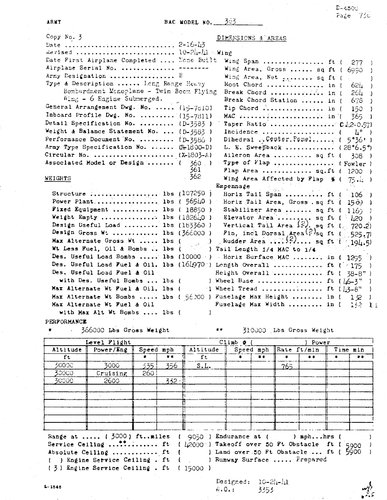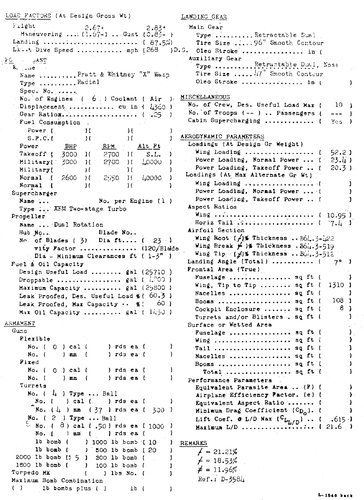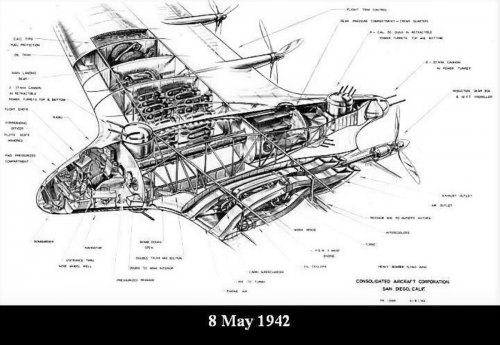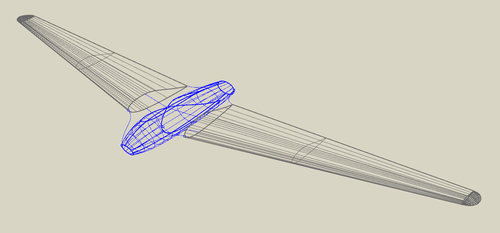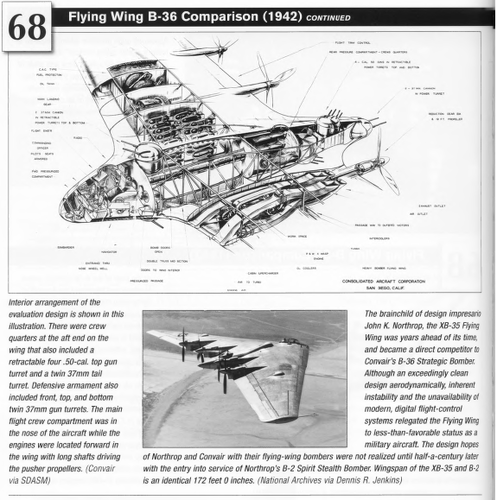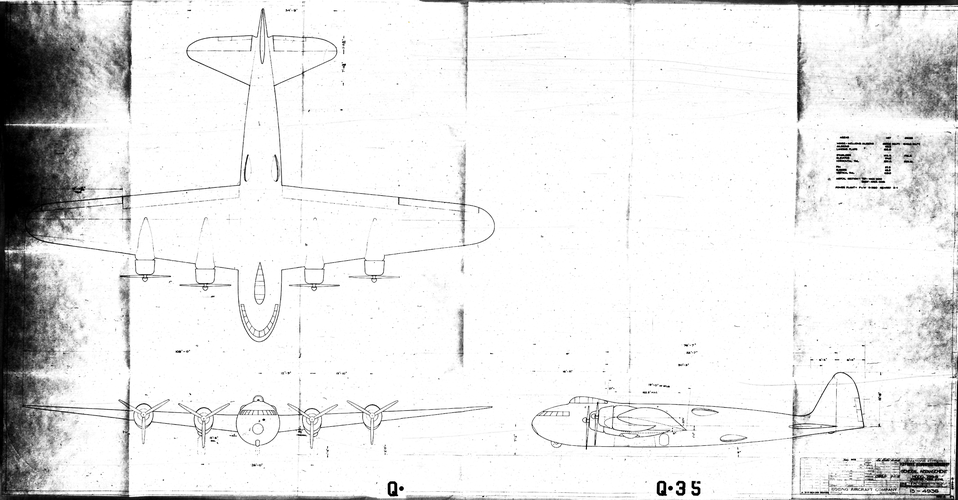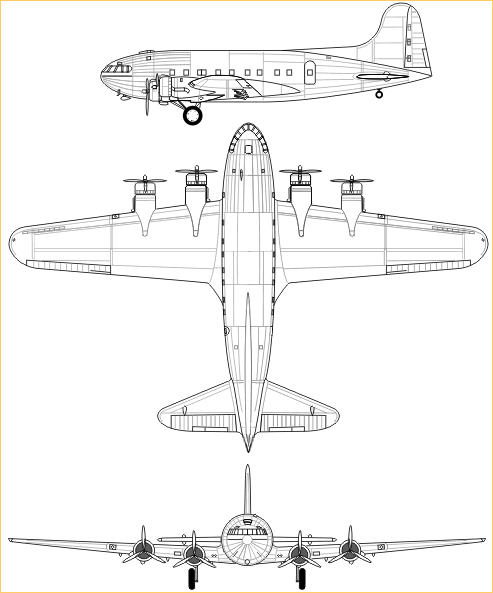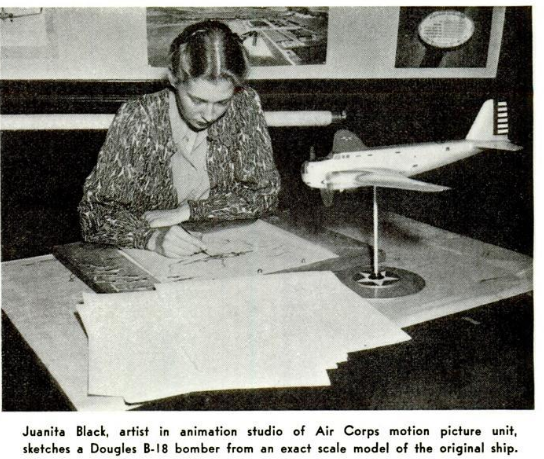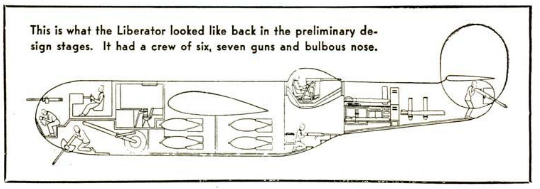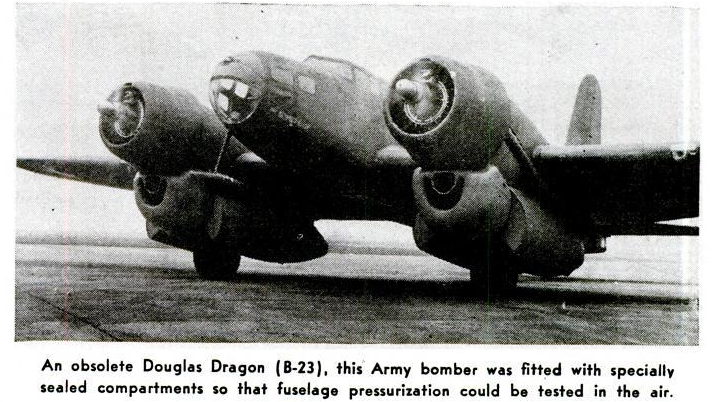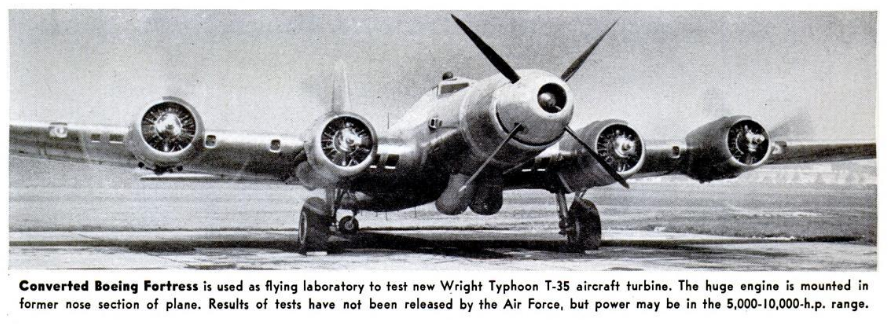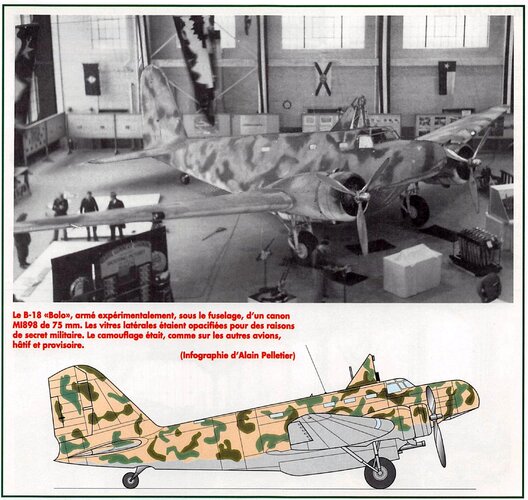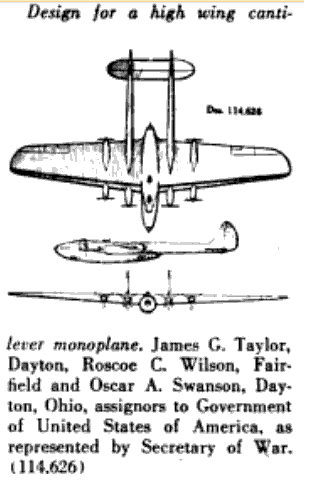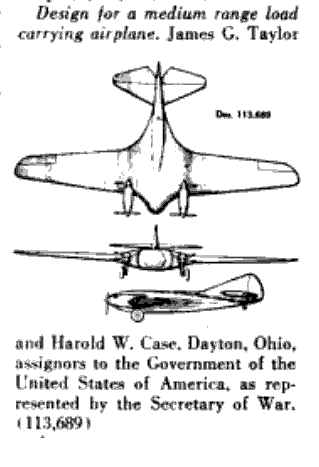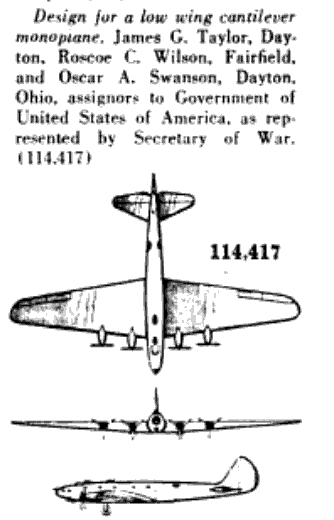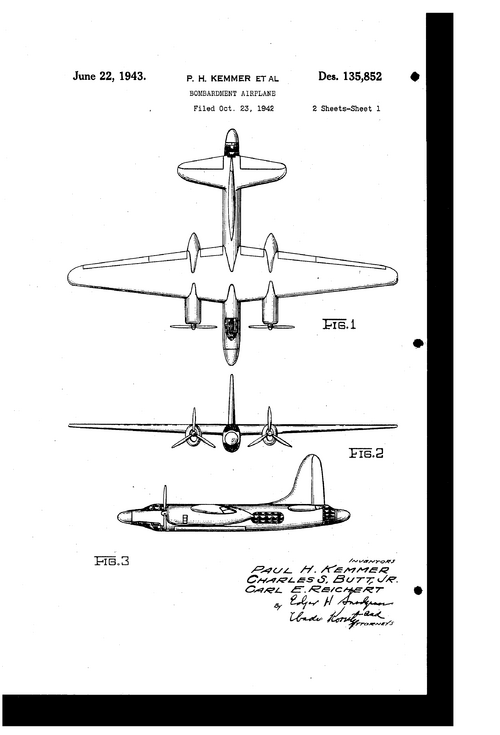Hi hesham thank you for responding is there any other drawings or specifications or a illustration where the gunner positions wereHi may anyone have more information on the boeing model 363
It was a six-engine twin-boom high altitude heavy bomber Project with pusher engines,intended
to compete Consolidated B-36,and maybe that was its drawing.
You are using an out of date browser. It may not display this or other websites correctly.
You should upgrade or use an alternative browser.
You should upgrade or use an alternative browser.
US Bombers
- Thread starter Antonio
- Start date
-
- Tags
- bomber crash ground attack martin
Dear hesham thank you very much for responding and giving me the only information they had on this aircraftWelcome Ian,
and unfortunately there was nothing known,except it had a wing span 270 feet.
- Joined
- 2 January 2011
- Messages
- 345
- Reaction score
- 372
Actually, there is a LOT of information about the Model 363 if you're willing to do the legwork and live close enough to the appropriate archive/know who to talk to.
I'm going to give a shot at posting a two-page synopsis of the project below. I have much more, but I'm saving it for a future book project.
I hope this is helpful and enjoyable. I have data on literally dozens of Boeing large bomber projects just before and during WWII. Please do not expect me to post much of it as I AM planning to put it and much more in a future title.
Respectfully submitted,
AlanG
I'm going to give a shot at posting a two-page synopsis of the project below. I have much more, but I'm saving it for a future book project.
I hope this is helpful and enjoyable. I have data on literally dozens of Boeing large bomber projects just before and during WWII. Please do not expect me to post much of it as I AM planning to put it and much more in a future title.
Respectfully submitted,
AlanG
Attachments
Wow this is really generous of you to share this information by any chance can you tell me how much the book cost because i am very interested of purchasing if it is for sale. By any chance are there any other illustrations you don't have to share it if you don't want to i was just curious cannot thank you enoughActually, there is a LOT of information about the Model 363 if you're willing to do the legwork and live close enough to the appropriate archive/know who to talk to.
I'm going to give a shot at posting a two-page synopsis of the project below. I have much more, but I'm saving it for a future book project.
I hope this is helpful and enjoyable. I have data on literally dozens of Boeing large bomber projects just before and during WWII. Please do not expect me to post much of it as I AM planning to put it and much more in a future title.
Respectfully submitted,
AlanG
- Joined
- 6 November 2010
- Messages
- 5,263
- Reaction score
- 5,517
I can't give you its name, unfortunately. Your image appears in Convair Advanced Designs - Secret Projects from San Diego 1923-1962 by Robert E Bradley, Specialty Press 2010.
It shows a 1942 alternative all-wing design, from Consolidated itself, to the B-36. A conventional layout was chosen for the B-36, as Consolidated was worried about the all-wing's longitudinal control.
It shows a 1942 alternative all-wing design, from Consolidated itself, to the B-36. A conventional layout was chosen for the B-36, as Consolidated was worried about the all-wing's longitudinal control.
- Joined
- 13 May 2006
- Messages
- 1,039
- Reaction score
- 952
- Joined
- 26 May 2006
- Messages
- 34,917
- Reaction score
- 15,791
By any chance Does anybody have the exact name of this plane
Dear Ian,
here it's.
Attachments
By the way thank you very much again for the documents my project With the 50 other people is going very smoothly nowActually, there is a LOT of information about the Model 363 if you're willing to do the legwork and live close enough to the appropriate archive/know who to talk to.
I'm going to give a shot at posting a two-page synopsis of the project below. I have much more, but I'm saving it for a future book project.
I hope this is helpful and enjoyable. I have data on literally dozens of Boeing large bomber projects just before and during WWII. Please do not expect me to post much of it as I AM planning to put it and much more in a future title.
Respectfully submitted,
AlanG
Dear hesham thank you very much for this article but are you sure there isn't a model number or anything thank you very muchBy any chance Does anybody have the exact name of this plane
Dear Ian,
here it's.
Thank you for responding thank you for telling me what book this image is from i will look into that book more thank you very muchI can't give you its name, unfortunately. Your image appears in Convair Advanced Designs - Secret Projects from San Diego 1923-1962 by Robert E Bradley, Specialty Press 2010.
It shows a 1942 alternative all-wing design, from Consolidated itself, to the B-36. A conventional layout was chosen for the B-36, as Consolidated was worried about the all-wing's longitudinal control.
- Joined
- 2 January 2011
- Messages
- 345
- Reaction score
- 372
Hesham.....your source for that page of information???
- Joined
- 2 January 2011
- Messages
- 345
- Reaction score
- 372
Ian, that information is from my files on the Model 363. The book is "in preparation", which is a nice way of saying it will be out sometime within my remaining lifetime.
AlanG
AlanG
Dagger
ACCESS: Secret
- Joined
- 24 December 2019
- Messages
- 335
- Reaction score
- 623
Hesham.....your source for that page of information???
It's from the above mentioned Convair Advanced Designs book by Bradley.
- Joined
- 6 November 2010
- Messages
- 5,263
- Reaction score
- 5,517
I would not rule out the possibility that AlanG(riffith) is Bradley's source for the image - although Bradley's book is where I saw it first. Hesham's image definitely is from Bradley's book.
Last edited:
- Joined
- 26 May 2006
- Messages
- 34,917
- Reaction score
- 15,791
Dear hesham thank you very much for this article but are you sure there isn't a model number or anything thank you very much
Dear Ian,yes there wasn't.
Sherman Tank
I don't want to change my personal text
- Joined
- 14 October 2016
- Messages
- 235
- Reaction score
- 211
Obviously modified with a view towards pressurizing the fuselage.
- Joined
- 2 January 2011
- Messages
- 345
- Reaction score
- 372
Sherman, while I haven't bothered yet to look up the aircraft specs on the 299-G, I'm not convinced the modification had anything to do with pressurization. The primary reasons for this are the gun positions, all of which would be open to one degree or another to the outside atmosphere. It is possible that the pilot's compartment might be pressurized, but that would seem to conflict with the structure of the rest of the aircraft.
When I get around to looking up the specs I'll post them here.
AlanG
When I get around to looking up the specs I'll post them here.
AlanG
taildragger
You can count on me - I won a contest
- Joined
- 2 November 2008
- Messages
- 404
- Reaction score
- 502
I can't think of any reason other than pressurization for adopting a round fuselage cross-section. Perhaps pressurization was thought to enable missions to be flown at altitudes beyond the reach of interceptors and the blisters are just for observers.Sherman, while I haven't bothered yet to look up the aircraft specs on the 299-G, I'm not convinced the modification had anything to do with pressurization. The primary reasons for this are the gun positions, all of which would be open to one degree or another to the outside atmosphere. It is possible that the pilot's compartment might be pressurized, but that would seem to conflict with the structure of the rest of the aircraft.
When I get around to looking up the specs I'll post them here.
AlanG
Sherman Tank
I don't want to change my personal text
- Joined
- 14 October 2016
- Messages
- 235
- Reaction score
- 211
You may very well be right. I might be conflating the 299-G with a later proposal for a pressurized B-17 variant because they look broadly similar.Sherman, while I haven't bothered yet to look up the aircraft specs on the 299-G, I'm not convinced the modification had anything to do with pressurization. The primary reasons for this are the gun positions, all of which would be open to one degree or another to the outside atmosphere. It is possible that the pilot's compartment might be pressurized, but that would seem to conflict with the structure of the rest of the aircraft.
When I get around to looking up the specs I'll post them here.
AlanG
- Joined
- 22 January 2006
- Messages
- 4,216
- Reaction score
- 2,018
March 2021 documents released at Retromechanix:
View: https://www.youtube.com/watch?v=8GIvU-SKILs
USAAC Materiel Division Design No. 361 Bomber Study - Wind tunnel report dating from September 11, 1941 summarizing tests of a 1/40 scale model of the Materiel Division Design No. 361, an internal USAAC study for a large twin boom four-engine heavy bomber. A relatively well known artist's impression of this concept has been circulating for several years and can be found on the Secret Projects Forum, where it is incorrectly labeled as the Martin 145B. This PDF is 10 pages long with 5 photos of the wind tunnel model; unfortunately, the general arrangement drawings of the design referenced in the report were missing from the files at NARA.
Selected Douglas Bomber Studies of WW II - Three-view drawings of the Douglas Models 332F, 371, 413 and 423 medium and heavy bomber projects of World War II.
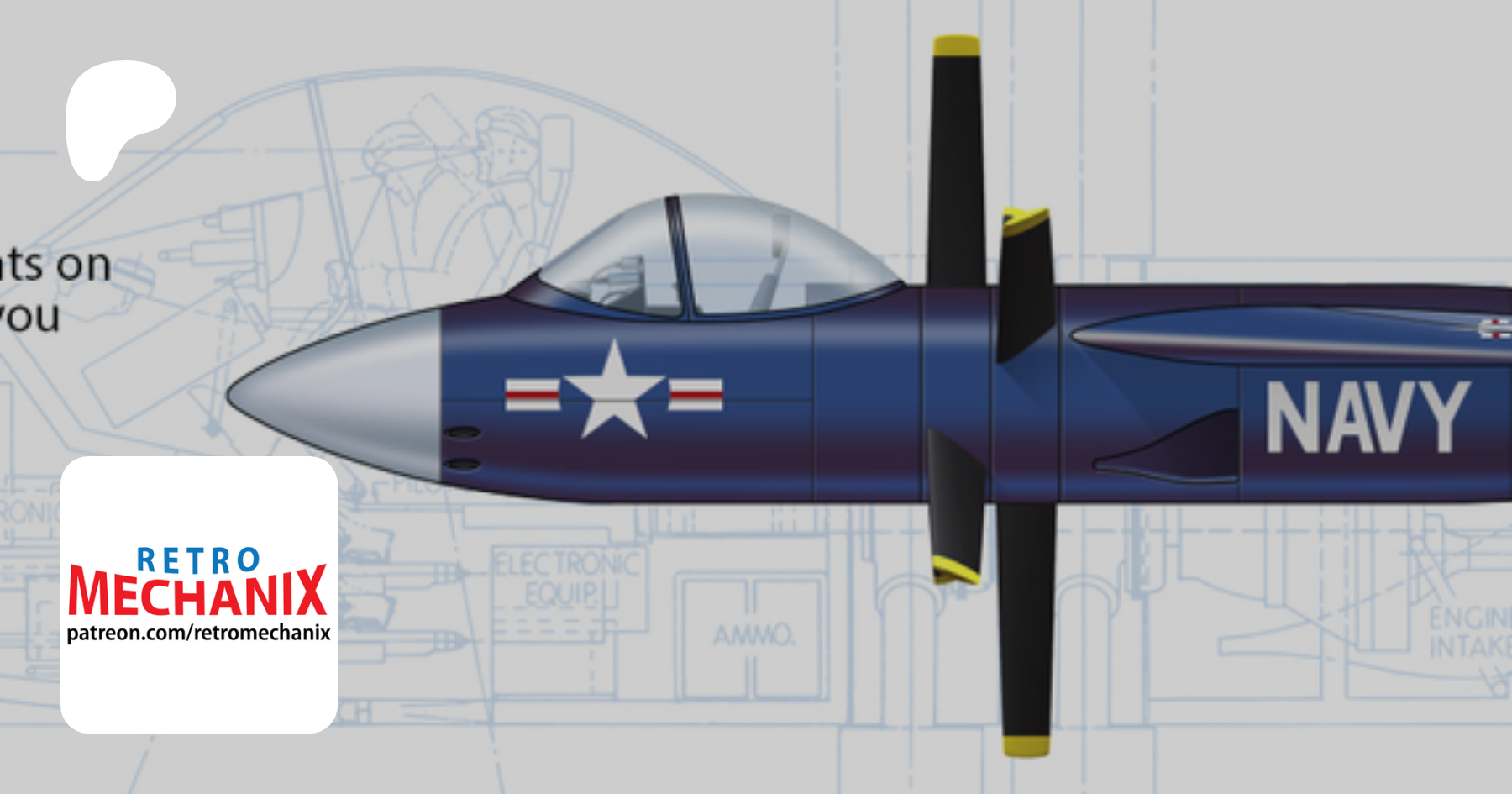
 www.patreon.com
www.patreon.com
USAAC Materiel Division Design No. 361 Bomber Study - Wind tunnel report dating from September 11, 1941 summarizing tests of a 1/40 scale model of the Materiel Division Design No. 361, an internal USAAC study for a large twin boom four-engine heavy bomber. A relatively well known artist's impression of this concept has been circulating for several years and can be found on the Secret Projects Forum, where it is incorrectly labeled as the Martin 145B. This PDF is 10 pages long with 5 photos of the wind tunnel model; unfortunately, the general arrangement drawings of the design referenced in the report were missing from the files at NARA.
Selected Douglas Bomber Studies of WW II - Three-view drawings of the Douglas Models 332F, 371, 413 and 423 medium and heavy bomber projects of World War II.
Get more from Retromechanix on Patreon
creating a digital archive of secret aerospace history
- Joined
- 3 June 2006
- Messages
- 3,094
- Reaction score
- 3,966
View: https://flic.kr/p/2m7TQrhEd Dempsey said:Martin XB-33 WWII bomber design--not built.
Sorry I could not manage to scan entire image.
Scanned from the archives of the Glenn L. Martin Maryland Aviation Museum, Baltimore, MD, 6/24/21
Vahe Demirjian
I really should change my personal text
- Joined
- 28 February 2013
- Messages
- 815
- Reaction score
- 570
I recently got a copy of Scott Lowther's new book on the B-47 and B-52 and in Chapter 3 of this book details are provided on page 102 for three 1941 Boeing intercontinental bomber designs, the Model 360 twin-boom flying wing (dated August 1941), the more conventional Model 361, and the Model 362 (September 1941). Given that these three designs predate the eventual contract awards by the USAAF for the intercontinental bomber to XB-35 and B-36, it's highly probable that the Model 360, Model 361, and Model 362 were Boeing's bids for the 1941 intercontinental bomber competition. Do you see reason to agree with my opinion that the Model 360, Model 361, and Model 362 were Boeing's submissions to the requirement, since you've noted that the Model 384 and Model 385 were conceived long after the XB-35 and B-36 contract awards?I don't believe the Boeing Model 363 was the entry for the eventual B-36 contract. The Consolidated entries for this competition were initially chosen by the Materiel Division as the most promising in early October, 1941, the initial request for proposals having gone out to manufacturers in April of the same year, with the contract being let to Consolidated for their six-engine version on November 15, 1941.
The Model 363 does not appear to have been submitted to the Air Corps for consideration until that same November 15 date, based upon copies of the original 3-view and a number of original documents I have. The Model 363 (and a number of additional designs) seems to have been one of quite a number of design studies done by Boeing under Contract AC-19441. Essentially, these were "What will be build after the B-36?" in nature.
At this year's IPMS Nationals in Columbia, SC I shall be giving a presentation about Boeing's Unknown Heavy Bomber Designs of WWII and will go into detail about the Model 363 and over two dozen OTHER designs Boeing did at the time. The talk will be "image-heavy" as I have a TON of drawings and a lot of data.
Hope to see you there!
AlanG
- Joined
- 2 January 2011
- Messages
- 345
- Reaction score
- 372
RE: XB-33
A number of years ago (2008-09) the B-33 was the subject of discussion in this thread. I thought I would add a little bit from the hundreds of pages of documents and drawings I have on both the Model 189 and the 190.
On April 28, 1941 the XB-33 (model 189) went from a two-engine aircraft powered by R-3350s to a four-engine bomber powered by supercharged R-2600 engines. This was as a result of increasing weight due to the addition of more equipment needed for modern combat and the subsequent reduction of performance.
This design change is referred to official documents as both the B-33 and the B-33A. When the contract was let to produce the four-engine version it was as the Model 190 B-33A. This aircraft was also referred to as both a heavy medium bomber or a medium range heavy bomber.
Eventually Martin would create over 30 detailed drawings of different variants of the Model 190 design, all of which I have.
Below is the side-view internal profile drawing of the Model 189. While I haven't taken the time to compare this with that of the earliest Model 190, I suspect they are at least very similar. As other variants were drawn there were some substantial changes in both internal and external fitment.
AlanG

A number of years ago (2008-09) the B-33 was the subject of discussion in this thread. I thought I would add a little bit from the hundreds of pages of documents and drawings I have on both the Model 189 and the 190.
On April 28, 1941 the XB-33 (model 189) went from a two-engine aircraft powered by R-3350s to a four-engine bomber powered by supercharged R-2600 engines. This was as a result of increasing weight due to the addition of more equipment needed for modern combat and the subsequent reduction of performance.
This design change is referred to official documents as both the B-33 and the B-33A. When the contract was let to produce the four-engine version it was as the Model 190 B-33A. This aircraft was also referred to as both a heavy medium bomber or a medium range heavy bomber.
Eventually Martin would create over 30 detailed drawings of different variants of the Model 190 design, all of which I have.
Below is the side-view internal profile drawing of the Model 189. While I haven't taken the time to compare this with that of the earliest Model 190, I suspect they are at least very similar. As other variants were drawn there were some substantial changes in both internal and external fitment.
AlanG

- Joined
- 26 May 2006
- Messages
- 34,917
- Reaction score
- 15,791
- Joined
- 2 January 2011
- Messages
- 345
- Reaction score
- 372
No.From Aero Digest 1939,
I know we displayed them before,but I think they could be entered a real competitions by that time ?.
AlanG
- Joined
- 26 May 2006
- Messages
- 34,917
- Reaction score
- 15,791
From P.H. Kemmer.
My dear Alan,
what about this one ?,if it was entered a competition or not ?.
- Joined
- 2 January 2011
- Messages
- 345
- Reaction score
- 372
I would need to dig deeply into my records but I'm pretty sure I have quite a bit on this and a couple very similar designs.
IIRC (and I'm not sure I do here), this design came out of the Material Division and at a time in the war where the practice was "Ya gotta design, send it in."
I'm busy writing a couple articles and the first chapter for an upcoming book, but I will drop into my files periodically and see if I can find what we're looking for. My gut instinct as to a competition is "No." due to the above.
AlanG
IIRC (and I'm not sure I do here), this design came out of the Material Division and at a time in the war where the practice was "Ya gotta design, send it in."
I'm busy writing a couple articles and the first chapter for an upcoming book, but I will drop into my files periodically and see if I can find what we're looking for. My gut instinct as to a competition is "No." due to the above.
AlanG
- Joined
- 26 May 2006
- Messages
- 34,917
- Reaction score
- 15,791
Anther Projects submitted to this Specification (39-640);
Burnelli XBA-1
Chance Vought VS-302
Consolidated LB-22 & LB-24
Martin M-178
American Secret Projects: Fighters, Bombers, and Attack Aircraft, 1937-1945
We find Stearman X-100 was appeared in 1938 and X-120 was shown 1941/42,so the Stearman proposal for this contest maybe X-110 ?.
Last edited:
Similar threads
-
North American Aviation NA-98X 'Super Strafer'
- Started by robunos
- Replies: 30
-
98-102 / C-103A "Attack Bomber" spec (alternatives to the Douglas DB-7/A-20)
- Started by Stargazer
- Replies: 40
-
Early Martin 167 projects: genesis of the Maryland
- Started by Stargazer
- Replies: 2
-
-

